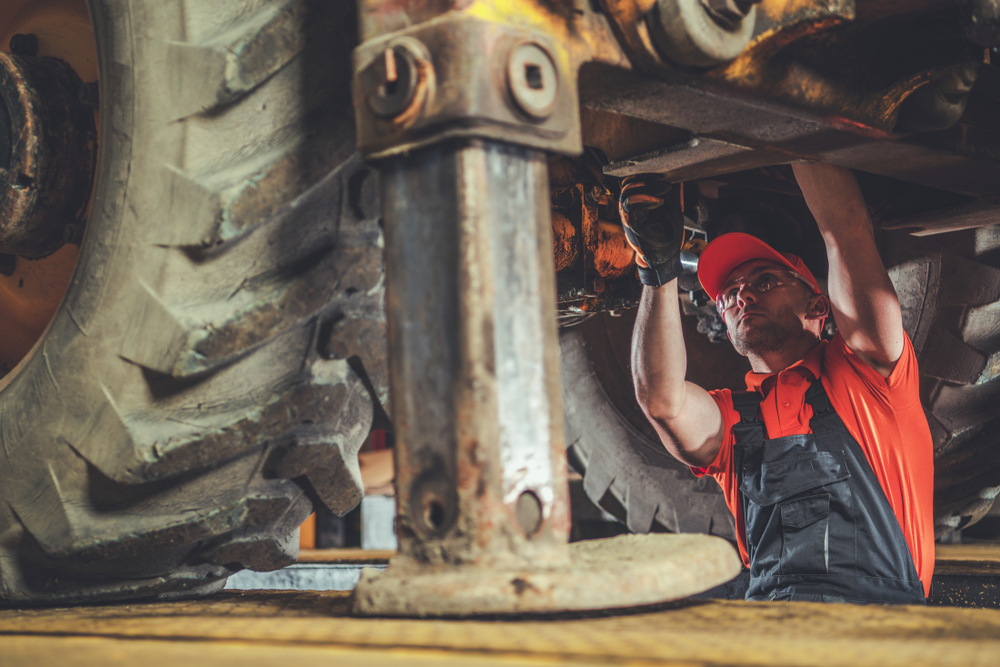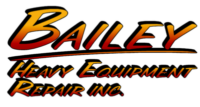From Mud to Maintenance: Why Your Equipment’s Undercarriage Needs a Fall Check-Up

When most operators in agriculture and construction think about heavy equipment repair, their minds often go straight to engines, hydraulics, or transmissions. Yet, beneath the surface lies a crucial component that endures relentless stress: the undercarriage. This part of your machine, often coated in mud, gravel, or crop residue, bears the full weight of your equipment and the force of every movement across fields and job sites. Ignoring it during seasonal maintenance can lead to costly repairs, downtime, and reduced efficiency. In Lexington, OR, where farm equipment repair is vital to keeping the region’s agricultural machinery service on track, the fall season is an ideal time to give this overlooked system the attention it deserves.
Fall brings a shift in field conditions. Soil dampness increases, debris accumulates more easily, and heavy machinery works overtime during harvest. These challenges magnify the wear on undercarriage parts. Track chains, rollers, idlers, sprockets, and pads all experience increased stress, making preventative maintenance more critical than ever. Whether you’re running combines, tractors, or dozers, the undercarriage serves as the literal foundation for your operations. The integrity of that foundation directly affects performance, efficiency, and ultimately profitability.
Neglecting your undercarriage doesn’t just lead to gradual performance loss—it often results in sudden breakdowns. When equipment is sidelined at peak harvest or during a critical construction timeline, the cost is more than just repair parts. It’s lost productivity, labor delays, and in some cases, missed contract deadlines. Farmers and contractors in Oregon know that timing is everything. That’s why implementing heavy equipment preventative maintenance, especially in the fall, is not optional—it’s strategic planning.
Why Fall Is the Best Season for Maintenance
Seasonal cycles dictate when machinery gets pushed hardest, and fall stands out as one of the busiest times in both agriculture and construction. In Oregon, harvest season places extraordinary demands on tractors, harvesters, and other agricultural equipment. At the same time, construction schedules often push to complete projects before winter weather sets in. These twin pressures make fall the prime time for evaluating and repairing undercarriage systems.
During spring and summer, your equipment likely encounters dry soil, dust, and heat. By contrast, fall introduces moisture, mud, and temperature fluctuations that accelerate wear. For example, wet conditions can cause soil to cling to track chains, trapping abrasive materials that grind against steel components. Moisture also increases the likelihood of rust and corrosion if inspections and cleaning are neglected.
In Lexington, OR, farm equipment repair services often see a spike in calls during fall precisely because operators put off preventative maintenance earlier in the year. This reactive approach costs more than proactive care. Agricultural machinery service providers emphasize that scheduling inspections before winter can extend the life of undercarriage components by thousands of hours.
Beyond the immediate wear caused by environmental conditions, fall is a natural transition point in the farming and construction calendar. Once harvest is complete or a major building phase ends, machinery often enters a lighter workload phase. This makes it an ideal time to take equipment offline for thorough servicing without disrupting operations. Preventative maintenance during this window ensures your fleet is ready when the cycle ramps up again in spring.
Key Components That Require Attention
An effective heavy equipment preventative maintenance program begins with knowing what to inspect and repair. The undercarriage is made up of interconnected parts, and failure in one area often accelerates wear elsewhere. Here are the most critical components to prioritize during a fall check-up.
The track chains are the backbone of the undercarriage. Each link works under constant tension, and when pins and bushings wear unevenly, the entire system suffers. Fall inspections should include measuring track wear and ensuring proper tension. Over-tightening leads to excessive stress, while loose chains can derail equipment.
Rollers and idlers guide and support the track, and when they seize or wear flat, they cause uneven stress across the system. During fall maintenance, technicians look for oil leaks, worn bearings, and surface damage. Replacing rollers before failure prevents more expensive repairs later.
Sprockets drive the entire track system, and worn sprocket teeth quickly destroy chains. In agricultural machinery service across Oregon, technicians often recommend replacing sprockets and chains together to avoid mismatched wear patterns. This simple step prevents premature breakdowns.
Track pads or shoes are in direct contact with the ground, so they endure the brunt of mud, rocks, and stubble. Worn pads reduce traction and stability, especially dangerous in wet fall fields. Replacing damaged shoes restores balance and ensures the safety of operators and workers alike.
Proper cleaning and lubrication also play a major role in maintenance. Mud, crop residue, and stones left caked onto the undercarriage create grinding surfaces that shorten component life. A thorough cleaning paired with fresh lubrication during fall service minimizes these risks and prepares machinery for storage or lighter winter use.
The Cost-Saving Power of Preventative Maintenance
Many operators hesitate to invest in heavy equipment repair until absolutely necessary. While this approach may seem economical in the short term, the reality is that reactive maintenance costs far more than proactive care. Preventative maintenance is not just about keeping machines running—it’s about maximizing return on investment.
Replacing a set of track chains and sprockets on a dozer or tractor can cost thousands of dollars. However, these components can last significantly longer when maintained properly. Simple practices like adjusting track tension, cleaning debris, and monitoring wear extend the lifespan of parts by hundreds of hours. In Lexington, OR, farm equipment repair shops consistently stress that early intervention is the key to avoiding catastrophic failures that halt harvest or construction work at critical times.
The financial savings extend beyond parts replacement. Downtime is the hidden cost of neglect. When a machine is out of service, operators lose not only the use of that equipment but also the labor productivity tied to it. For farmers, delayed harvest can result in crop loss, lower yields, and reduced profits. For contractors, missed deadlines can damage reputation and cost future contracts. Preventative maintenance ensures that equipment is available when it’s needed most, preserving both income and customer trust.
Heavy equipment preventative maintenance also enhances fuel efficiency. A poorly maintained undercarriage increases resistance, requiring more energy to move machinery across fields or worksites. Over time, this raises fuel costs substantially. With fuel being one of the largest ongoing expenses for agricultural and construction operations, the savings from proper maintenance add up quickly.
Finally, proactive care supports resale value. Well-documented maintenance histories make equipment more attractive to buyers, often fetching higher prices when it’s time to upgrade. In Oregon, where the demand for reliable used agricultural machinery is strong, preventative maintenance becomes an investment in future profitability.
Finding Reliable Service in Lexington and Across Oregon
While some preventative maintenance tasks can be handled in-house, specialized inspections and repairs require professional expertise. Not all operators have the tools or training to measure track wear, rebuild rollers, or replace sprockets. That’s why finding a trusted provider of heavy equipment repair is essential.
In Lexington, OR, farm equipment repair shops understand the unique demands of local agriculture. From wheat farms to cattle operations, equipment is pushed to its limits. Local technicians bring not only technical expertise but also familiarity with regional soil conditions, crop cycles, and seasonal demands. This specialized knowledge ensures more accurate diagnoses and effective solutions tailored to each operation.
Agricultural machinery service providers across Oregon also recognize that downtime during harvest or construction season can be devastating. Many offer mobile service units, bringing repairs directly to fields and job sites. This eliminates transport delays and gets equipment back in service faster. For large-scale operations running multiple machines, on-site service is often the most efficient option.
When choosing a repair provider, operators should look for shops that emphasize preventative maintenance, not just reactive repairs. Ask about fall inspection programs, undercarriage-specific expertise, and service packages that include cleaning, lubrication, and part replacements. A provider focused on extending the life of machinery, rather than simply fixing what’s broken, adds far more value in the long run.
Reputation also matters. Word-of-mouth recommendations from other farmers and contractors in Oregon can guide operators toward trustworthy service providers. In industries where equipment uptime determines success, reliability and responsiveness are non-negotiable qualities.
Conclusion
From mud-choked tracks to worn sprockets, your equipment’s undercarriage is often the silent workhorse of your operation. Yet its importance cannot be overstated. Ignoring fall maintenance risks more than breakdowns—it threatens productivity, profitability, and safety. For farmers and contractors in Lexington, OR, and across Oregon, prioritizing undercarriage inspections and repairs before winter ensures machinery is ready for the challenges ahead.
Heavy equipment preventative maintenance is not a luxury; it’s a necessity. By investing time and resources into fall check-ups, operators extend the lifespan of equipment, reduce long-term costs, and safeguard their livelihoods. Whether you run tractors in the field, dozers on construction sites, or harvesters during peak season, the foundation of your success rests on an undercarriage that’s clean, inspected, and ready to perform.
In the ever-demanding cycles of agriculture and construction, those who prepare in the fall position themselves for success year-round. Don’t wait for breakdowns to dictate your schedule—take control through preventative care. The mud on your tracks may be inevitable, but costly downtime doesn’t have to be.
